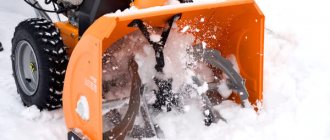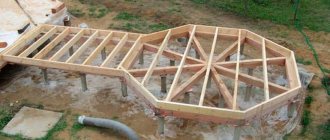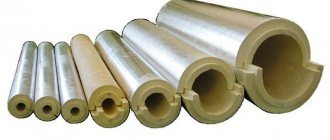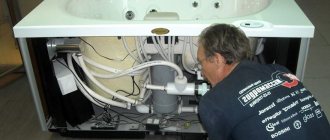Do-it-yourself chainsaw carburetor adjustment
For an independent carburetor option, you need to familiarize yourself with its structure and understand the procedure for the work that is carried out to adjust the parts responsible for the proper functioning of the components of the device and parts close to it.
It is necessary to carefully handle items for the system option, and also to determine whether the set characteristics correspond to very acceptable values.
About the carburetor design
The carburetor serves to mix the flammable mixture with air while maintaining predetermined proportions. If clear doses are not followed, the proper operation of the engine is at risk. When a huge amount of air enters during mixing of the components, but there is not enough fuel, then such a mixture is considered “lean”.
Oversaturation should not be allowed, because with a larger amount of fuel compared to air, malfunctions or engine wear are also likely. Carburetor adjustment is needed not only before initial use, but also when any differences in its operation are detected. Before starting to work with a chainsaw, do not forget to run it in.
Carburetor components
The carburetor design contains a standard set of parts, but may vary slightly depending on the manufacturer. Components:
- The basis . This is a special tube that is visually similar to an aerodynamic design. Air passes through it. In the transverse direction, a damper is located in the middle of the pipe. Its position can be changed. The more it is extended into the passage, the less air enters the engine.
- Diffuser . This is the constricted part of the tube. With its help, the air supply speed increases precisely in the segment from which the fuel comes out.
- Channels for fuel supply. The fuel mixture is contained in the float chamber, then passes into the nozzle, from which it flows into the atomizer.
- Float chamber . It is a separate structural element, reminiscent of the shape of a tank. Designed to constantly maintain the optimal level of fuel fluid before entering the channel from which air enters.
Don't know which chainsaw to choose?
Read our article. Are you looking for cheaper models, but reliable and time-tested? Pay attention to Russian-made chainsaws.
Or explore foreign chainsaw manufacturers such as Shtil.
Distinctive features
In our store you can buy a STIHL chainsaw at a price that is quite affordable for people involved in professional wood processing. The presence of factors such as:
makes the Stihl chainsaw the leader of this class of hand tools. You will never regret that you decided to buy a Shtil MS 661 chainsaw, since it is truly a very convenient and reliable mechanism for sawing and felling wood.
We have the best tool
If you need a Stihl chainsaw, the price of which is the best on the market, then you can purchase it in our company’s store. We offer our customers only the best certified tools from the manufacturer. Our price for the Stihl MS 661 chainsaw includes the manufacturer’s guaranteed obligations for the trouble-free operation of this machine. Therefore, if you need to buy a Stil chainsaw at a price that is quite reasonable, call the contact number or leave a request on the website.
What you need to have for setup
Each carburetor owner must have the necessary tools to adjust this system. There are three adjustment screws that are located on the body of the device. They have their own markings:
- L - screw for correcting low speeds.
- H - screw for adjusting high speed.
- T - regulates idle speed, in most cases used for experiments.
Chainsaw air filter
Before adjusting the carburetor, you need to prepare the device:
- The engine warms up, that is, it starts about 10 minutes before repairs, and turns off when starting work (see how to start a chainsaw).
- The air filter is checked and washed.
- The chain is stopped by turning screw T until it stops (see chain oil).
To carry out a safe repair, you need to prepare a flat surface where you can carefully place the device and turn the chain in the opposite direction. Need a tachometer. It determines whether there is a malfunction in the carburetor. When turning the screws, the sound should be perfect and absolutely smooth. If you notice squealing notes, the mixture is oversaturated.
Chainsaw STIHL MS 250
- STIHL MS 250 chainsaw device
- Adjusting the carburetor of the Shtil 250 chainsaw
- Technical specifications STIHL MS 250
- Reviews of the STIHL MS 250 chainsaw
The STIHL MS 250 chainsaw is an extremely dangerous tool, like any saw of this kind. It must be handled with care, avoid using the tool without using personal protective equipment, and carefully read the instructions for the saw before use. It often contains useful information that the average user is not even aware of.
Checking acceleration operation
Need to do a little research. Acceleration of the device is initiated. It is necessary to evaluate the proper operation of the engine during maximum speed. When the engine is functioning correctly, it means that when you press the accelerator, the speed quickly increases to 15,000 rpm.
If this does not happen or the increase in speed is too slow, you must use the screw marked L. It turns counterclockwise. Moderate movements must be observed, since the turn cannot be more than 1/8 of a full circle.
Summing up
Stihl chainsaws are famous for their reliability, so the need to adjust the carburetor and repair it very rarely arises; if such a need does arise, then it is better to entrust the adjustment process to specialists in their field, at least because to set the maximum speed you need to have a tachometer.
If you have an urgent need to adjust the carburetor on a Stihl MS 361 chainsaw, then strictly follow the algorithm and recommendations described in the article. And then, if possible, contact a specialized center as soon as possible for fine tuning, it will extend the life of the chainsaw.
Maximum number of revolutions
To limit this indicator, you need to use a screw marked H. To increase the number of revolutions, turn it clockwise, and to reduce them in the opposite direction. The maximum frequency should not exceed 15000 rpm.
If you make this figure larger, the device’s engine will wear out, which will lead to problems in the ignition system. When rotating this screw, you need to take into account the ignition processes of the device. If the slightest malfunctions appear, then the maximum speed value must be reduced.
Chainsaw bar length
Speaking about how to choose a chainsaw , it should be noted that the length of the tire is also of considerable importance. In the technical characteristics of the instrument, this indicator has the additional definition of “recommended”. What does this mean? The fact is that the longer the tire, the greater its resistance to the torque of the engine crankshaft. If the power of the chainsaw is insufficient, then its user will have to make additional efforts, and this will cause early wear and tear on both the saw set and the engine. In addition, fuel consumption will also increase. Therefore, the length of the bar is consistent with the power of the tool and the definition of “recommended” must be read as “maximum”, because a shorter bar length is possible, but a longer one is extremely undesirable.
Final check at idle
Before this procedure, it is necessary to carry out a full adjustment of the carburetor components when operating at maximum speed. Next, you should check the functioning of the device in idle cold mode. When the correct adjustment parameters are achieved, you will notice that the carburetor design closely matches the following criteria:
- When the idle cold mode is activated, the chain does not move.
Chainsaw accelerator
- When the accelerator is pressed even slightly, the engine accelerates at an accelerated pace. With gradual deepening of pressure, you can notice that the engine speed increases proportionately, reaching the maximum permissible values.
- When the engine is running, you can compare its sound to a four-stroke device.
If violations are noticed in the given parameters or the device has not been fully adjusted, you need to perform the main setup step again. Sometimes actions are performed incorrectly. In this case, the device may fail due to the loss of the correct node settings. In this case, you will have to contact a specialist.
Design, characteristics and principle of operation
A gasoline chain saw consists of a main body with handles, inside of which there is an engine; the working part of the tool is a guide bar with a chain having saw teeth.
The design includes an automatic clutch mechanism that operates on a centrifugal principle.
So, at idle speed of a gasoline engine, the chain remains motionless.
After pressing the accelerator, the chainsaw engine spins up, transmitting torque through the clutch to the gearbox with the drive wheel, which in turn sets the chain in motion.
NOTE:
The chain, bar and drive sprocket assembly form a saw set. Each part must be from the same manufacturer, since even minimal deviations in size will lead to rapid breakdown of the saw, or to loss of power and generally poor quality work.
The chainsaw has two different tanks, one for the fuel mixture on which the tool operates, the other for the machine oil that lubricates the main elements.
A special air filter is installed in the carburetor device, which in turn can be:
- Sponge - if there is contamination that can be easily determined by eye, the filter is cleaned or needs to be replaced. It is often made from spongy polyurethane foam or rubber.
- Felt - effectively purifies the air, therefore it is used in heavily polluted places.
- Nylon – easy to clean with a soft brush in soapy water and dries quickly.
Attention!
To avoid engine damage, do not use damaged air filters.
Material
The chainsaw engine with carburetor and gearbox are a single structure, covered on top with protective panels made of durable plastic.
The rear handle with the accelerator button is most often also plastic, but the front handle, which bears the entire load during operation, is metal, often rubberized or has another anti-slip coating.
The chainsaw bar is made of high-quality steel with grooves for the chain around the perimeter.
The design of some models consists of two steel plates with grooves filled with polyamide, which can significantly reduce weight.
Circuit characteristics
The main working part of a chainsaw is the saw chain, which consists of links connected by rivets.
Half the distance between three successive rivets is the chain pitch, which is one of the main characteristics of the saw part.
Depending on this parameter, circuits are divided into the following groups:
- 6.35 mm, which corresponds to 14” - are intended for working with one-handed low-power saws, and therefore are rarely found in the CIS.
- 8.25 and 9.3 mm, which corresponds to 0.325” and 3/8”, are low-profile chains that are equipped with the vast majority of chainsaws. During operation, they are characterized by a low level of vibration and a low probability of kickback. Both factors increase the safety of using the saw in principle.
- 10.26 and 19.05 mm, which corresponds to 0.404” and 3/4” - large links and increased productivity. Chains with this pitch are installed only on powerful felling saws, since due to the removal of a large layer of material in one pass, it provides serious resistance.
On the outer part of the chainsaw chain there are cutting teeth, and on the inner part there are driving links, which engage with the drive wheel and move along the guide grooves of the tire.
These are called shanks, and their thickness is another characteristic of the chain, measured with a caliper.
The following standard values are distinguished:
- 1.1 mm and 1.3 mm - for entry-level chains intended for small volumes of work. Installed on semi-professional and household tools, most often it has a pitch of 0.325”.
- 1.5 mm - not suitable for professional cutting, however, most chains have this thickness of shanks. 3/8” pitch options provide the safest operation.
- 1.6 mm and 2 mm - for complex work. The material used in production is special grades of steel, which ensures increased strength of the chain and its ability to withstand increased loads.
Another characteristic of the chain is the height of the tooth profile between their upper edge and the stops, which determines the depth of cut.
According to this parameter, the circuit is:
- Low profile – 0.635 mm, installed on household and semi-professional saws.
- High profile – 0.762 mm, installed on semi-professional and professional units.
A low profile provides less vibration, and as a result, reduces the wear rate of the saw set, while a high profile, in turn, is the opposite, but is characterized by an increased cutting speed.
Among other things, a chainsaw saw chain has a number of secondary characteristics, including, for example, the geometry of the cutting teeth, their number, and type of sharpening.
We should not forget about the length of the entire chain and the total number of links (from 40 to 173), as well as the order in which they appear.
High-alloy chromium-nickel steel is used in production.
NOTE:
Chains for working on frozen wood are tipped with carbide.
Dimensions and weight of chainsaws
Depending on the purpose of the saw, its weight can range from 2 to 11 kg, and its total length exceeds 1.3 m.
At the same time, the length of a chainsaw without a tire is on average 50 – 85 cm, and the width is 20 – 36 cm.
As for the tires, their standard length is 300 - 1050 mm, the groove width is in the range of 1.1 - 2 mm. The volume of the tank for the fuel mixture is about 0.3 - 1 liter, and for the lubricating fluid the chain is half that size.
Engine parameters
Chainsaws are equipped with a two-stroke (very rarely 4-stroke) internal combustion engine, running not on pure gasoline, but on a pre-prepared fuel mixture of gasoline and lubricant.
To start it, a manual starter is used.
Depending on the class of the tool, the power of the standard motor is about 1.5 - 7 kW.
The size of the saw and its weight depend proportionally on this indicator.
The rotation of the crankshaft is transmitted to the drive sprocket through a gearbox, while the engine itself develops a maximum speed of approximately 13.5 thousand rpm, due to which the chain rotation speed is approximately 10 - 15 m/s.
Continuous operation time
Household saws are designed for an operating rate of 20 hours per month, which is approximately 40 - 50 minutes per day.
At the same time, their continuous operation time is maximum 15–20 minutes.
At the same time, professional-class saws are designed to work 10–16 hours a day with short breaks, or for 8 hours of continuous work.
Additional functions
Additional features include:
- The starting aid system is a primer, which is a manual pre-priming pump. Its use allows you to fill the carburetor with fuel in advance, and faster than using the same starter.
- Electronic ignition - improves engine starting performance in cold weather.
- Anti-vibration system - consists of rubber gaskets that are installed between the holding handles and the saw itself. Provides comfortable work, especially for a long time, and also eliminates the occurrence of some unpleasant diseases caused by continuous vibration.
- Inertia brake - is a special lever installed near the front handle, when pressed, the saw chain instantly stops its movement. This quick stop system eliminates injury due to kickback, that is, a sharp throw of the tool at the moment when the very end of the saw meets the wood. When the saw rebounds, it changes its position in space and the brake lever is pressed virtually independently, resting on the forearm.
- Handle heating is an extremely useful function when working in the cold season, especially at subzero ambient temperatures.
- Additional filters extend the life of the chainsaw. In particular, we are talking about the air supply system to the carburetor, where two filters are installed simultaneously: fine and coarse.
Some chainsaws are equipped with a decompression valve, which significantly reduces the resistance when starting the engine with a manual starter, lowering the compression, which takes most of the effort to overcome.
Also not a rare occurrence among professional chainsaws is the automatic regulation of fuel supply at a certain operating speed.
This is achieved due to the presence of a microprocessor that controls the fuel valve, and the result is the best operating mode of the engine at a particular moment in time.
Disassembling the carburetor if necessary to check or repair components
The design of different carburetor models is almost the same, so when working with them you can use the standard scheme. All elements must be removed carefully, and then laid out in the order given below , so that you can successfully place the items in place after the completion of the repair work.
Read:
Removing the Top Cover
- The top cover is removed. To do this, you need to unscrew the 3 bolts holding it in a circle.
- The foam rubber is also removed, since it is the upper component of the filter that conducts air.
- The fuel hose is removed.
- The drive thrust is output directly to it.
- The cable end is disconnected.
- The gasoline hose can be completely removed if you systematically pull it off the fitting.
To finally prepare the carburetor for major repairs or replacement of the smallest parts, you need to carefully disconnect it from the main system . Sometimes further disassembly is required. You should unscrew the components carefully and put the fasteners in groups, as these small parts are easily lost.
Chainsaw kickback hazard
Many chainsaw users have a certain fear of kickback. This moment is truly the most dangerous in the process of using this tool - it consists in the sudden throwing of the saw towards its operator. It is necessary to clarify that this situation occurs when the end of the tire comes into contact with the surface of the wood.
In order to protect the operator from injury, there is a function for quickly stopping the chain, performed by a special brake - an inertial brake. Its drive is a shield placed in front of the left hand of a person working with a chainsaw, which represents a kind of lever that occupies two positions. Before starting the tool, the shield switches to a position that is closer to the hand, so it becomes cocked. When an impact occurs, the operator's hand rests on it, then it is triggered, instantly braking the chain. In addition, this brake can change position independently (without touching a person’s hand), by inertia. Therefore, when choosing a chainsaw, it is better to choose the option with an inertia brake.
Another way to protect yourself from kickback is to exclude the dangerous sector from the cutting process itself. This can be done using a protective sector that covers the tip of the saw set and prevents the chainsaw from “kicking.” True, this method is used somewhat less frequently than with a chain brake. Also, if you want to choose a Swedish chainsaw, you will not find such a protective shield in any model, due to the peculiarities of Swedish labor safety standards. Such devices allow you to fell trees in the following way - the operator first inserts the end of the bar into the tree, and then saws it in a circle, which allows you to cut a tree 2 times thicker than the length of the chainsaw bar, but in our country this method of felling trees is only allowed to be used only for high-class operators.
Instructions for Chinese
To correctly configure the carburetor of a Chinese chainsaw, you must first remember the factory settings of the device, then turn on the engine. Subsequently, you will have to leave it running for several hours in order to accurately set your own parameters. Sometimes work is carried out only after ten minutes of engine operation, but many Chinese-made models require special handling.
Chinese chainsaw model
Adjustment procedure:
- Activities begin in idle mode . Using the adjusting screws, you need to achieve a systematic increase in engine speed, so you should first let it run at low speeds. A deviation from the norm is the movement of the chain along the bus. In this case, you need to adjust the outer screws to the optimal position so that the chain remains motionless.
- The transition to medium speed speed is carried out . Sometimes the engine starts to smoke. This defect can be eliminated by tightening the screw to supply a leaner fuel mixture.
In this case, the smoke will disappear, but the engine speed will increase. You need to adjust the settings until you reach a level where, when you press the throttle, the engine smoothly picks up speed, and no sudden jerks or interruptions are heard.
- The device's engine is being checked . The chainsaw is switched to minimum speed, and then the lever is quickly pressed. When pressed maximally, it is held for 3 seconds. If there are problems with the engine, you need to gradually loosen the screw until the optimal position is reached.
- The chainsaw should work for several hours in real conditions . You need to cut wood, and then inspect all the elements involved in this event. If there are deviations, they must be corrected using adjusting devices. When all defects have been eliminated and the optimal settings have been established to supply correctly concentrated fuel, the device setup process can be considered complete.
What can you cut with a chainsaw?
The chainsaw is designed for cutting wood materials.
It is most often used for cutting down trees, for cross-cutting trunks and cutting off branches.
The maximum log thickness that the tool can handle directly depends on the length of the guide bar used.
The secondary characteristics here are engine power, however, the higher it is, the larger the bar the saw works with.
The standard tire size for household chainsaws is 30 – 40 cm.
Professional saws are equipped with tires usually up to 1 m long, but there are 120 and even 150 cm models for forestry.
In addition to wood and lumber, a chainsaw is used for working on ice, in particular when cutting sculptures.
Also, this tool is sometimes used for cutting foam concrete and even plastic pipes.
When adjusting a chainsaw carburetor
The chainsaw operates using a two-stroke internal combustion engine. Such a motor provides the tool with two important advantages - mobility and a high degree of performance. The fuel-air mixture is supplied to the engine cylinder via a carburetor. This carburetor needs adjustment or adjustment when:
A tachometer for a chainsaw is needed for running in the tool, since it is used to adjust the carburetor. Its setting using the device becomes more accurate, which has a positive effect on the operation and performance of the unit
Resource of work in choosing a chainsaw
Despite the fact that the concept of “work resource” is used by literally all chainsaw sellers, its exact definition does not exist. By this indicator, ordinary people understand the operating time after which the tool becomes unusable, but for specialists it is an indicator of the duration of the device’s operation until the first major overhaul, or up to a 40% reduction in compression. It follows from this that it is not easy to give an exact figure, so the main attention should be paid to the availability of a branded service. Therefore, the main advice for operating a chainsaw, like any other device, is to choose the optimal operating mode and avoid serious overloads. In general, how you work with the tool is how long it will work.
Tachometer for adjusting the carburetor of a chainsaw
Each carburetor on chainsaws has three adjusting bolts with springs. Each bolt is responsible for adjusting the corresponding parameter. These parameters are:
- L - regulation of the amount of fuel supply at low speeds
- H - regulation of the amount of fuel supply at high speeds
- T or LA—increase or decrease the amount of fuel-air mixture when the tool is idling
To adjust the carburetor, you will need to prepare thin screwdrivers (slotted) and a tachometer.
Do-it-yourself carburetor adjustment is done by performing the following manipulations:
- The cover with the air filter is removed, after which access to the high-voltage wires of the tool is opened. Such manipulations are carried out if a wire-type tachometer is used
- If a modern wireless type of device is used, then access to high-voltage wires is not required
- Start the tool engine, then connect the wires to the high-voltage cable
- The wireless device must be brought to the candle
- Now you need to pick up a screwdriver and start adjusting
- The bolt marked L must be screwed in clockwise until it stops, then loosened a quarter turn.
- The chain on the power tool will move, so you need to adjust the bolt T. You need to rotate the bolt in both directions until the chain on the tool stops moving
- Now you need to gas for 8-10 seconds
- To set the maximum number of revolutions on the tool, you will need to tighten the adjusting bolt H. In this case, you need to monitor the readings of the device that will display the number of revolutions
- At the final stage, you need to repeat the idle speed setting by moving the bolt T
Once the setup is done, you need to check the functionality of the tool in action. The absence of dips, jerks and jumps indicates that the procedure was performed correctly.
The relationship between weight and power of a chainsaw
Many manufacturers try not to increase the power of household chainsaws, because increasing the power will affect the weight of the tool itself. In addition, at home, high power is not the most important factor when choosing a chainsaw and its subsequent operation. The weight-power ratio is most important for those working professionally with a chainsaw, because this parameter has a significant impact on the convenience of work, and, accordingly, the quality of work and output. If you choose a chainsaw for household needs, then you don’t have to overpay for extra kilowatts, which you won’t need to cut wood for the stove anyway.
How to make a tachometer for a chainsaw with your own hands
Making a tachometer for a chainsaw with your own hands is rational only if there is a single need for its use. If you are a regular owner of gas-powered tools, then it is recommended to acquire a factory-made device. Multifunction multimeters have a frequency measurement mode that can be used to calculate revolutions.
You can make the device yourself, but for such purposes you will need a soldering iron and some electronic consumables: resistors, diodes, capacitors. The head from a tape recorder is used as a speed indicator.
The video shows the finished device in action. The only drawback of such a device is low accuracy, as well as the need to calculate the number of revolutions, since the device displays decibels.
If you need to get the most accurate results for setting up a chainsaw, then experts recommend using factory tachometers (even if they are of Chinese origin).
Chainsaw cutting speed
When answering the question of how to choose a chainsaw , many take into account such an aspect as the speed of sawing wood with tools from a certain manufacturer or models. It should be noted that the cutting speed is affected by the condition of the saw set, including the chain itself. When sawing wood with a blunt chain, the efficiency of work is significantly reduced, and the likelihood of engine failure significantly increases, because it experiences heavy loads. Therefore, a professional approach to sawing itself requires regular correction of the chain, for example, after completion of the work. In addition, the cutting speed, as well as productivity, is influenced by the shape of the cutting teeth themselves, as well as the chain pitch.
The best result can be achieved if you optimally select the chain and engine power, which is the second most important parameter that affects the activity of the tool, as well as the scope of the conditions of use of each specific model.
Types of tachometers for chainsaws
In order to adjust the carburetor, wired devices are used, since they are several times cheaper than wireless ones. Wired devices are connected to the high-voltage wires of the instrument (for which there are special clamps) by wrapping them with 5-6 turns. Instructions are included with the device, so you should read it before use.
The disadvantage of wired devices is the need to remove the cover and air filter to get to the high-voltage wire. Wireless devices that measure shaft rotation speed even at a distance of 15-20 cm from the motor do not have this drawback.
If you know how to adjust the carburetor on a tool, you will not need to contact service centers. It is strongly recommended that you carry out the first setup according to the instructions, so that all subsequent times you can perform the procedure yourself without the help of specialists.
What you need to know about chainsaws?
The service life of a chainsaw, measured in engine hours, is a very loose concept.
For some manufacturers, this is the time until compression is reduced by 40% or until the first engine overhaul.
Others, by the resource of a chainsaw, mean the number of hours it has worked until the moment when the tool can be safely sent to a landfill.
It is impossible to determine what exactly is meant by the numbers indicated in the saw’s passport.
Important!
Whatever model is chosen, the buyer must ensure that there is a branded service center in relative proximity.
Adjusting the chain brake
The chain brake often does not work due to grease or sawdust clogging the brake band and the space under the cover. All parts should be cleared of blockages. Perhaps the tape is simply worn out, then it needs to be replaced.
The operation of the chain brake is restored by mechanical cleaning
Some parts of a chainsaw wear out faster than others. These include the drive sprocket, tire, chain, and anti-vibration elements. For quick replacement, it is better to always have spare parts on hand. Don't neglect sharpening the chain.
New chainsaw won't start
Often, a completely new chainsaw cannot be started the first time. When the engine is cold started, the switch is set so that the damper is closed. Now you need to pump fuel into the carburetor, and then give the starting handle a good pull. It is considered normal if, even after 2-5 starts, the tool starts but stalls. After this, you can move the switch to the half-throttle position, and then to the working position, and continue to start the chainsaw.











